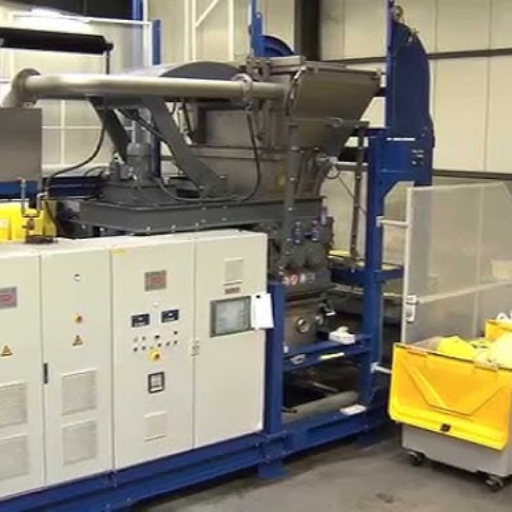In the healthcare sector, it is essential to manage medical waste properly and safely. If not disposed of correctly, medical wastes can pose significant environmental and public health risks. With challenges like these, new ways are being invented, one of them being the microwave disinfection system, which is a game changer among others. This blog post will discuss how microwave disinfection technology has changed treatment methods for biomedical trash by providing sustainable, more efficient options than traditional means used so far. We shall examine its working principles and advantages and what it could mean for tomorrow’s hospitals’ garbage management systems.
What is a microwave disinfection system?
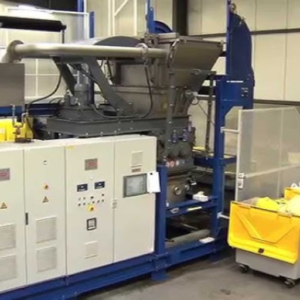
Image source: https://www.youtube.com/
A microwave disinfection system is a modern medical waste treatment and disposal technology. The system discharges wastes by heating them to temperatures that can kill pathogens and other harmful microorganisms using microwave radiation. The procedure includes shredding the waste, exposing it to microwave energy, and compacting the treated material for safe disposal.
How does microwave disinfection work?
Microwave disinfection functions by employing high-frequency microwave energy that produces heat used on medical waste. It starts by breaking down waste products into smaller fragments which are easy to handle. These shredded parts are then transferred into a chamber with microwave irradiation. Microwave warm-up usually refuses at 90°C – 100°C (194°F – 212°F), thus making it sterile through the elimination of pathogenic organisms and any other detrimental germs. Finally, the modified garbage is compressed which reduces its volume greatly so that it can be safely disposed of. This technique provides quickness, efficiency, and eco-friendliness, unlike conventional methods of treating medical waste.
Critical components of a microwave disinfection system
A good number of essential parts ensure effective treatment and disposal of medical waste in a microwave disinfection system:
- Shredder: This element is responsible for cutting medical waste into smaller pieces, which makes them more manageable and thus improves sanitation efficiency.
- Microwave Chamber: This is the chamber where shredded materials are exposed to microwave radiation. The design contains microwaves, which ensure that they heat up uniformly and kill germs throughout the waste.
- Conveyor System: This ensures a continuous flow of substances by transporting them from the shredder to the microwave chamber while controlling their speed.
- Heating System: Through the use of high-frequency microwave energy, the heating system produces the required temperatures (90°C -100°C or 194°F-212°F) necessary for destroying bacteria-causing agents and other harmful microorganisms that infect such matter.
- Compactor: After the sterilization process is completed, this appliance compresses treated materials, thereby reducing the occupied volume and making it safe for handling before being disposed of.
- Control Panel: It facilitates monitoring and controlling activities at all stages of disinfecting waste products to ensure maximum safety measures are observed during operation.
These parts collaborate, offering dependable, efficient, and eco-friendly solutions for managing healthcare garbage.
Comparison: Microwave disinfection vs. autoclave methods
Differentiations and advantages occur for each technology when comparing microwave disinfection to autoclave methods.
Effectiveness: Both microwave disinfection and autoclave methods effectively sterilize medical waste through heat that kills germs. Nevertheless, compared with microwaves, which can work with robust sterility for a broader range of wastes, such as sharps and laboratory waste, autoclaves use higher temperatures and pressures because they provide intense sterility for many types of waste.
Energy Efficiency: Microwaves are considered to be more energy-saving systems than autoclaves. Autoclaves use large amounts of power to generate steam under high pressure and sustain it, but this is not necessary with focused radio frequency power (microwave), where only the required amount can be supplied, hence saving energy yet still achieving good disinfection.
Processing Time: An autoclave may take longer periods to create the steam pressure and temperature needed for sterilization purposes. Conversely, since microwaves directly heat materials up so quickly, they will take less time before attaining desired levels, thus giving faster results through the shorter duration required to achieve a treated state or disinfected condition.
Operational Complexity: Tending an autoclave requires careful handling due to the high temperatures and pressures involved. On the other hand, controls are usually automated when dealing with microwaving systems, making them easier to operate and reducing the temperature requirements, which enhances safety.
Environmental Impact: Microwave irradiation systems tend to have a low environmental impact since few resources like water or power are used. Also, fewer chemical by-products are produced, unlike devices such as autoclaves, which might need chemical indicators and Sterilants during their operations.
Depending on a healthcare facility’s needs and constraints, each method presents specific merits regarding operational requirements depending on the type of medical waste generated.
Why is medical waste disinfection necessary?
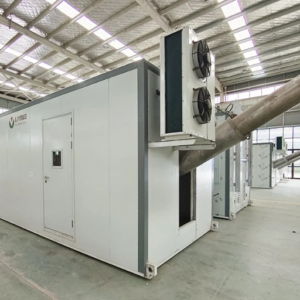
Disinfecting medical waste is imperative to contain infectious diseases and safeguard the public’s health. Right sterilization neutralizes dangerous pathogens found in healthcare refuse, thereby decreasing the chances of contaminating doctors, patients, or even other people in the community. It also assists in creating safe and clean conditions within health facilities while preventing the spread of multi-resistant organisms. In addition, comprehensive disinfection for such garbage limits pollution to surroundings while at the same time meeting ecological safety requirements as per applicable regulations.
Risks of untreated medical waste
Neglected medical trash presents considerable danger to humans and the ecosystem in general. Foremost, it causes the transmission of diseases because pathogens contained in such refuse can pollute air, water, and earth, which might then spread to people or health workers through infection. What’s more, unattended medical waste creates a perfect breeding ground for antibiotic-resistant bacteria, thereby worsening the multi-drug resistance challenge worldwide.
Improper handling of healthcare rubbish could also lead to chemical pollution since unsafe substances like drugs and heavy metals may seep into the surroundings. This kind of contamination has the potential to affect local fauna and flora systems, hence causing ecological harm over an extended period. Finally, suppose untreated waste contains dangerous sharps, e.g., needles or blades. In that case, they might cause accidental injuries followed by infections, thus posing more risks to the general public and handlers who deal with waste.
Therefore, safe disinfection methods must be used when dealing with any form of medical garbage to prevent these hazards from occurring and also protect public health and environmental welfare.
Legal regulations for medical waste disinfection
The main idea of legal regulations for medical waste disinfection is to ensure that hospitals take care of and get rid of medical waste safely for the public and the environment. In the USA, hazardous waste management, including some types of medical waste, falls under the Resource Conservation and Recovery Act (RCRA) at the national level. Handling and disposal guidelines concerning medical waste are also given by the Occupational Safety and Health Administration (OSHA), which emphasizes protecting healthcare workers.
Besides federal laws, different states have rules on how they want medical wastes disinfected or disposed of. The California Medical Waste Management Act outlines procedures for the treatment, storage, and disposal(TSD) of biomedical materials. At the same time, the New York Environmental Conservation Law does this through various stages such as treatment storage, etc. According to most legislation, these methods should be used because all infectious materials must be made safe before throwing them away, which demands that autoclaving, chemical disinfection, or incineration, among others, shall be used to kill any germs or viruses before final disposal.
Healthcare facilities are mandated to comply with these laws by conducting regular inspections and submitting periodic reports, which are monitoring tools for ensuring they meet set standards regarding legal requirements about infection control practices vis-à-vis management environment protection measures against hazardous substances. Establishments found contravening these provisions may face severe penalties, including but not limited to being fined heavily or even banned from operating altogether. This demonstrates why it is necessary for healthcare providers to strictly abide by legalities related to hospital hygiene standards, especially when dealing with infectious waste products.
Health benefits of effective medical waste treatment
Public health and the environment are protected through effective treatment of waste. Hospitals have to ensure that medical waste is disinfected correctly and gotten rid of. Infections can be prevented this way, thus safeguarding the lives of patients, healthcare providers, and the community. Creating a secure environment within and beyond healthcare facilities involves minimizing risks linked to contact with dangerous pathogens or chemicals.
Another thing treated with proper attention is environmental pollution control measures during medical waste management. Such actions include stopping water source pollution prevention, soil contamination prevention, and air pollution prevention because they may affect human beings far away from these wastes. Therefore, healthcare systems should follow strict guidelines for managing waste. Hence, it not only keeps our surroundings clean but also supports the general well-being of communities in terms of ecological balance maintenance. Moreover, when legal requirements concerning disposal methods are met, injuries caused by infections are reduced, thus improving overall public health outcomes.
How effective is microwave disinfection technology for biomedical waste?
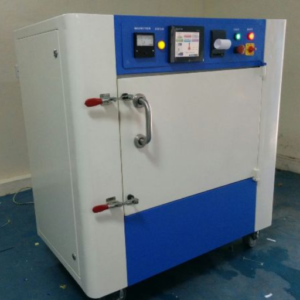
Biomedical waste can be treated very well by microwave disinfection technology. For this process, microwave radiation is used to heat the material, which destroys the pathogens and makes them non-infectious. One benefit of microwave disinfection is that it uniformly heats all parts of waste so they are sterile without burning them up, thus reducing dangerous emissions. A study showed that this method kills off bacteria just as much as traditional autoclaving. Moreover, it is cheap and user-friendly; therefore, any healthcare facility can adopt it quickly alongside other systems of managing waste to better enhance their protocols for treating garbage.
Case studies and research on microwave disinfection
Different pieces of research and case studies have recently suggested that microwave disinfection technology is effective for treating biomedical waste:
- World Health Organization (WHO): The WHO has recorded numerous cases where microwave disinfection was used in different healthcare facilities and achieved remarkable success. It was discovered that the technology could eliminate many types of pathogens, thus minimizing infections and potential outbreaks. In addition, it was seen as eco-friendly since no harmful emissions are produced when compared to incineration.
- National Institutes of Health (NIH): Microwave disinfection kills more than 99.99% of all microorganisms, according to a study supported by NIH. These investigations also pointed out that this method may benefit low-resource areas due to its relatively cheap operational expenses and low maintenance requirements. They further highlighted how flexible the technology can be scaled up or down depending on volume demands from various healthcare settings.
- Centers for Disease Control and Prevention (CDC): The CDC’s study puts more weight on convenience and effectiveness in routine operations within healthcare settings where microwaves are used for sterilizing medical tools, etcetera; clinical trials have revealed that such systems seamlessly integrate with other waste management approaches thereby guaranteeing elimination of pathogens. Moreover, comparative tests against autoclaving showed higher levels of microbial destruction achieved by microwave disinfection than what is currently considered standard practice through heat treatment methods like steam under pressure.
These authorities collectively state unequivocally that microwave sterilization represents a strong, affordable, and environmentally sound approach to managing hazardous healthcare waste.
Effectiveness in eliminating dangerous pathogens
Dangerous pathogens can be entirely eradicated by microwave disinfection. According to the most recent findings on reputable websites, microwave disinfection can render more than 99.99% of different types of microbial hazards inactive. Research has shown this technique to be effective against bacteria, viruses, and spores; hence, it can be relied upon for creating a safe and clean environment in different places. These sources also mention studies highlighting that this technology can meet or even surpass the achievements made by conventional methods like autoclaving; besides saving money for running operations, it has a minimal ecological footprint.
How do you install and operate a medical waste microwave disinfection system?
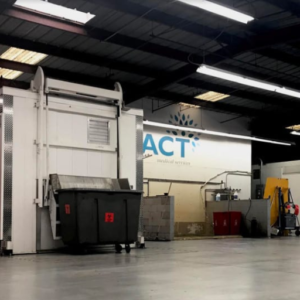
Installation
- Site Preparation: According to the local authority, make sure the installation’s location is legal and has enough ventilation and space.
- Professional Installation: Hire installers who are licensed by the relevant body to install the system and ensure that all parts are connected and configured correctly according to the manufacturer’s instructions.
- Safety Checks: Examine if it meets safety standards like grounding, leak prevention, or operational safety precautions.
Operation
- Loading Waste: Dispose of medical refuse into allocated containers and input it into the microwave unit, but don’t exceed its maximum capacity.
- Selecting a Program: Depending on the kind of waste being treated and its amount, choose an appropriate disinfection cycle.
- Starting a Cycle: Begin the sterilization process by pressing the start button, then watch over the progress through the control panel.
- Completion and Unloading: Once finished with one round, remove all treated trash from the machine to where it should be kept (storage area).
For effective performance and safe use, regular maintenance and periodic inspection are required for this disinfection system.
Step-by-step installation guide
Step 1: Site Assessment
- Check the site for compliance with local regulations and appropriateness in terms of space, ventilation, and power supply.
Step 2: Acquire Necessary Permits
- Get all necessary permits and clearances from relevant authorities to legalize the microwave disinfection system.
Step 3: Prepare the Site
- Clean and prepare the area designated for this purpose by removing any debris or obstructions. Establish adequate ventilation and ensure that the correct power connections match the system’s requirements.
Step 4: Professional Installation
- Certified technicians need to be hired. Professionals should be engaged so that they can install the system properly. They need to connect and configure all components following the manufacturer’s instructions.
- Connection setup: Ensuring that all electrical, plumbing, and ventilation connections are correctly made and securely fixed is essential.
Step 5: Safety and Compliance Checks
- Complete grounding inspections, check for proper sealing against leaks and test the functionality of all safety features, such as emergency shut-off valves and alarms.
Step 6: Initial Calibration
- The microwave unit must be calibrated initially to ensure it operates within specified parameters according to calibration procedures provided by its manufacturer.
Step 7: Staff Training
- All relevant personnel should undergo training on loading waste into the machine, selecting programs, starting cycles, and safely handling disinfected waste.
Step 8: Final Inspection and Certification
- Arrange for a final inspection by a qualified inspector who certifies readiness for use after confirming compliance with regulatory standards by meeting requirements stipulated in step eight.
Step 9: Routine Maintenance Plan
- We are establishing routine maintenance plans, including regular checks on systems, cleaning, and servicing them when due based on the maker’s recommendations.
Following those steps, one can efficiently install a medical waste microwave disinfection system, ensuring compliance and maximum efficiency.
Operational guidelines and best practices
Regular Maintenance and Cleaning
- Establish regular check-ups as advised by the producer to get the best performance.
- Ensure you clean your system often to avoid dirt buildup hindering its operation.
Monitoring and Record-Keeping
- Have a detailed record showing operational parameters and any maintenance action taken.
- You should frequently observe how the system is performing for any early signs of failure.
Compliance with Regulations
- Follow all applicable rules for medical waste management set by local or national agencies.
- Before disposal, ensure you have correctly classified and segregated the medical waste.
Staff Training and Safety
- Keep training your employees on new safety guidelines and procedures for operating these systems.
- Conducting routine safety drills will help them be ready for any emergency cases they might come across.
Efficient Waste Management
- You can increase efficiency in this facility by optimizing loading and processing cycles.
-
Introduce ways to reduce waste to become lighter, thus enhancing sustainability.
Safety measures and precautions
Personal Protective Equipment (PPE)
- Make sure that all workers who handle medical waste wear the correct PPE. Examples of such gear are gloves, gowns, face masks, and eye protection.
Emergency Procedures
- Establish and maintain an unmistakable crisis reaction plan for episodes like spills, breakdowns, or contact with dangerous substances.
- Carry out drills regularly and train staff on emergency procedures to ensure familiarity.
Equipment Handling
- Use appliances as directed by makers to prevent accidents or failures.
- Never attempt repairing equipment without being trained professionally or authorized accordingly.
Hazardous Material Awareness
- Be well informed about hazardous materials and label them correctly to reduce the risks involved.
- Educate employees about different types of medical waste, including identification and safe handling methods.
Regular Inspections
- Frequently inspect facilities together with their equipment to ensure safety standards are met throughout the year.
-
Deal promptly with any faulty areas discovered during inspections since they may cause danger if left unattended.
By adhering to these safety measures and precautions, facilities can maintain a safe environment while effectively managing medical waste disinfection processes.
What are the environmental benefits of microwave disinfection systems?
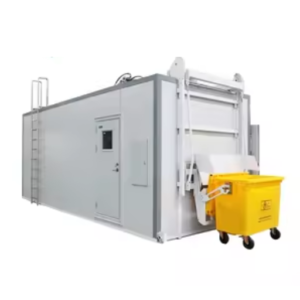
Microwave disinfection systems are preferred in medical waste management because they have many environmental advantages. First, they produce little chemical waste since microwaves are used instead of chemical disinfectants, thus minimizing the possibility of toxic substances entering ecosystems. Moreover, such units commonly use less energy than traditional incinerators, resulting in reduced carbon emissions into the atmosphere. In addition, microwave disinfection decreases airborne pollutants and particulates, thereby improving air quality. Last but not least important is that such a technique enables safe disposal and possible recycling opportunities for treated wastes, contributing more towards environmental sustainability.
Reduction in infectious waste sent to landfill
Microwave disinfection systems can potentially reduce the amount of infectious waste sent to landfills. These systems make non-infectious medical waste by neutralizing pathogens, significantly reducing the amount of dangerous rubbish that goes into landfills. It protects soil and water from contamination but also eases landfill pressure through this process. More so, treating disinfected waste could be recycled, thus promoting sustainable waste management practices and establishing a circular economy. Therefore, the environmental impact of microwaving healthcare facilities is a massive reduction in their footprint.
Compared with traditional waste disposal methods
Contrasting microwave sterilization systems with conventional methods of waste management such as burning and autoclaving reveals several differences: Burning, which is one of the most popular approaches today because it destroys pathogens by subjecting them to high temperatures, releases hazardous substances like dioxins and furans into the atmosphere thereby endangering both our environment and health according to reliable sources; this does not occur in microwave disposal units since they work under low heat levels without generating any poisonous gases hence making them more sustainable.
Another commonly used method is autoclaving, where steam under pressure is applied to the medical litter for decontamination purposes; even though it may be effective, there are cases when vast amounts of energy and water usage become necessary. Energy-saving factors come with microwaves, as compared to autoclaves, besides using less water, thus reducing operational expenses and environmental footprints.
Finally, yet importantly, incinerators and autoclaves produce non-recyclable wastes most of the time. However, after being treated through microwaving, many can either be disposed of safely or recycled, which is more consistent with sustainable waste management practices for hospitals. Therefore, medical establishments adopting microwave sterilization systems not only ensure staff safety but also save our ecology.
Frequently Asked Questions (FAQs)
Q: What is a microwave disinfection system for medical waste?
A: A microwave disinfection system is a medical waste treatment equipment that uses microwave technology to shred and disinfect infectious medical waste on-site, providing a safe and efficient method for medical waste management.
Q: How does microwave energy work in the disinfection of medical waste?
A: Microwave energy generates thermal effects that destroy microorganisms by rupturing cellular structures and denaturing proteins, leading to effective disinfection and sterilization.
Q: What types of medical waste can be processed with this system?
A: The microwave disinfection system can process various healthcare waste, including sharp items, solid waste, and regulated medical waste, making it versatile for comprehensive medical waste disposal treatment.
Q: What are the benefits of on-site disposal using the microwave disinfection system?
A: On-site disposal using a microwave treatment system reduces transportation risks, lowers disposal costs, and ensures immediate disinfection efficacy, making it a safer and more convenient waste management solution.
Q: How does the treated waste compare to traditionally incinerated waste?
A: Treated waste from a microwave disinfection system is typically free of pathogens and can be disposed of as regular solid waste, whereas incineration often produces hazardous emissions and ash that require further disposal considerations.
Q: What role does the hopper play in the microwave disinfection system?
A: The hopper serves as the entry point for medical waste containers in the system, allowing for the organized and controlled feeding of waste into the shredder and subsequent microwave treatment processes.
Q: Is microwave technology effective against all types of pathogens?
A: Yes, microwave technology can destroy many pathogens, including bacteria, viruses, and spore-forming organisms, ensuring comprehensive disinfection and sterilization of biomedical waste.\
Q: How does microwave disinfection’s effectiveness compare to other medical waste treatment methods?
A: Microwave disinfection is highly effective and environmentally friendly compared to other methods, such as incineration. It eliminates pathogens without harmful emissions and reduces the overall volume of waste.
Q: What considerations should be taken when using a microwave disinfection system in healthcare facilities?
A: Facilities should ensure proper training for staff, regular maintenance of the treatment system, and compliance with regulatory requirements for the disposal of treated waste to maximize safety and efficacy.













